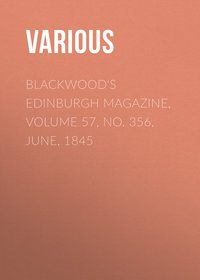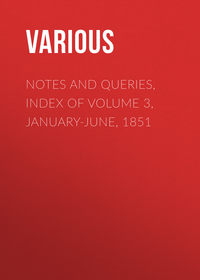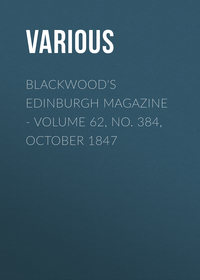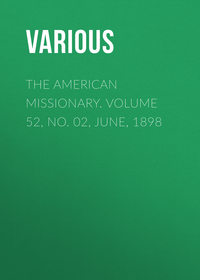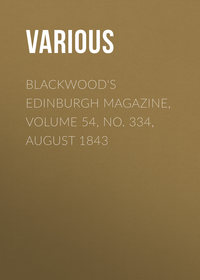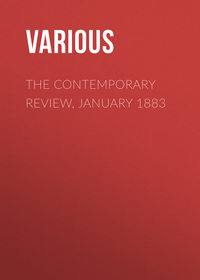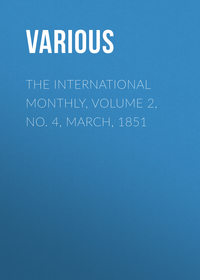 полная версия
полная версияNotes and Queries, Number 04, November 24, 1849
Few things are more suggestive of queries—as everybody knows from experience—than the products of culinary art. I will not, however, further trespass on space which may be devoted to a more dignified topic, than by submitting the following.
Query.—Does the phrase "to eat humble pie," used to signify a forced humiliation, owe its origin to the "umble pye" specified above?
J.T. HAMMACKBISHOP BARNABY
Mr. Editor,—Legour asks, why the people in Suffolk call a lady-bird "Bishop Barnaby?"
I give the following from the late Major Moor's Suffolk Words.
"Bishop-Barney. The golden bug. See Barnabee. In Tasser's Ten Unwelcome Guests in the Dairy, he enumerates 'the Bishop that burneth' (pp. 142. 144.), in an ambiguous way, which his commentator does not render at all clear. I never heard of this calumniated insect being an unwelcome guest in the dairy; but Bishop-Barney, or Burney, and Barnabee, or Burnabee, and Bishop-that-burneth, seem, in the absence of explanation to be nearly related—in sound at any rate. Under Barnabee it will be seen that burning has some connection with the history of this pretty insect."
"Barnabee," writes the Major, "the golden-bug, or lady-bird; also Bishop-Barney: which see. This pretty little, and very useful insect, is tenderly regarded by our children. One settling on a child is always sent away with this sad valediction:—
"Gowden-bug, gowden-bug, fly away home,Yar house is bahnt deown and yar children all gone."To which I add another nursery doggerel less sad:—
"Bishop, Bishop-Barnabee,Tell me when your wedding be,If it be to-morrow dayTake your wings and fly away."The Major adds, "It is sure to fly off on the third repetition."
"Burnt down," continues the Major, "gives great scope to our country euphonic twang, altogether inexpressible in type; bahnt deeyown comes as near to it as my skill in orthography will allow."
Ray, in his South and East Country Words, has this:—
"Bishop, the little spotted beetle, commonly called the lady-cow or lady-bird. I have heard this insect in other places called golden-knop, and doubtless in other countries it hath other names. (E. W. p. 70) Golden-bugs the common Suffolk name."
J.G. Southwold, Nov. 16. 1849.TRADE EDITIONS—COTTLE'S LIFE OF COLERIDGE
Sir,—In the 2nd vol. of Mr. Collier's valuable and interesting Extracts from the Registers of the Stationers' Company, p. 28, is the following entry:—
"Thos. Dason. Licensed unto him the praise of follie; to print not above xv° of any impression, with this condition, that any of the Company may laie on with him, reasonablie at every impression, as they think good, and that he shall gyve reasonable knowledge before to them as often as he shall print it."
This is both curious and important information as being, in all probability, the earliest recorded instance of a custom still kept up amongst booksellers, and which now passes under the designation of a "Trade edition;" the meaning of which being, that the copyright, instead of being the exclusive property of one person, is divided into shares and held by several. There are Trade editions of such voluminous authors as Shakspeare, Gibbon, Hume, and Robertson, for instance; and Alison's Europe, if published half a century back, might in all probability have been added to the list. The difference between the ancient and the modern usage appears to be this, that formerly when the type was set up for an edition "any of the company may laie on, (these two last words are still technically used by printers for supplying type with paper,) reasonablie at every impression," &c.; in other words, may print as many copies from the type "as they think good;" whereas now, the edition is first printed, and then the allotment of the copies, and the actual cost of them is made, according to the number of shares.
If this is a "Note" worth registering, it is much at your service, whilst for a "Query," I should be very glad to be informed, when a very able review, the date of which I neglected to make at the time, appeared in the Times newspaper, of the 2nd edition of Cottle's Life of Coleridge.
With many good wishes for the success of your register,
I remain, &c.
JOHN MILAND.DIBDIN'S TYPOGRAPHICAL ANTIQUITIES
Sir,—I am very glad to have elicited the information contained in your number just published respecting the copy of Borde's work in the Chetham Library. As I have a great respect for Mr. Ames, I must remark that he had no share in the blunder, and whenever a new edition of his work is undertaken, it will be well to look rather curiously into the enlargements of Dibdin. In the mean time this information naturally leads to another Query—or rather, to more than one—namely, "Had Mr. Bindley's copy this unique imprint? and what became of it at the sale of his books? or is it only one of the imaginary editions which give bibliographers so much trouble?" Perhaps some one of your correspondents may be able to give information.
Yours, &c.
S.R. MAITLAND.QUERIES ANSWERED, NO. 2
MADOC THE SON OF OWEN GWYNED
The student who confines himself to a single question, may fairly expect a prompt and precise answer. To ask for general information on a particular subject, may be a less successful experiment. Who undertakes extensive research except for an especial purpose? Who can so far confide in his memory as to append his name to a list of authorities without seeming to prove his own superficiality? I throw out these ideas for consideration, just as they arise; but neither wish to repress the curiosity of querists, nor to prescribe bounds to the communicative disposition of respondents.
Did Madoc, son of Owen Gwynedd, prince of Wales, discover America? Stimulated by the importance of the question, and accustomed to admire the spirit of maritime enterprise, at whatever period it may have been called into action, I have sometimes reflected on this debatable point—but can neither affirm nor deny it.
I advise the student, as a preliminary step to the inquiry, to attempt a collection of all the accessible evidence, historical and ethnographic, and to place the materials which pertain to each class in the order of time. The historical evidence exists, I believe exclusively, in the works of the chroniclers and bards of Wales; and the ethnographic evidence in the narratives of travellers in America. The opinions of modern writers, the gifted author of Madoc not excepted, he is at liberty to consider as hors-d'oeuere—to be passed on, or tasted, à plaisir. As an exemplification of this plan, I submit some short extracts, with critical remarks:—
"Madoc another of Owen Gwyneth his sonnes left the land [North-Wales] in contention betwixt his brethren, and prepared certaine ships with men and munition, and sought adventures by seas, sailing west, and leaving the coast of Ireland so far north, that he came to a land unknowen, where he saw manie strange things."—CARADOC OF LLANCARVAN, continued—The historie of Cambria, 1584. 4º. p. 227.
[The history of Caradoc ends with A.D. 1156. The continuation, to the year 1270, is ascribed by Powel, the editor of the volume, to the monks of Conway and Stratflur.]
Carmina Meredith filii Rhesi [Meredydd ab Rhys] mentionem facientia de Madoco filio Oweni Gwynedd, et de suâ navigatione in terras incognitas. Vixit hic Meredith circiter annum Domini 1477.
Madoc wyf, mwyedic wedd,Iawn genau, Owen Gwynedd;Ni fynnum dir, fy enaid oedd,Na da mawr, ond y moroedd.The same in English.
Madoc I am the sonne of Owen GwyneddWith stature large, and comely grace adorned;No lands at home nor store of wealth me please,My minde was whole to searche the ocean seas."These verses I received of my learned friend M. William Camden." Richard Hakluyt, 1589.
[The eulogy of Meredydd ab Rhys is very indefinite, but deserves notice on account of its early date. He "flourished," says W. Owen, "between A.D. 1430 and 1460."]
"This land must needs be some part of that countrie of which the Spaniardes affirme themselves to be the first finders sith Hannos time; … Whereupon it is manifest, that that countrie was long before by Brytaines discouered, afore either Columbus or Americus Vespatius lead anie Spaniardes thither. Of the viage and returne of this Madoc there be manie fables fained, as the common people doo use in distance of place and length of time rather to augment than to diminish: but sure it is, that there he was."—HUMFREY LHOYD, Additions to the Historie of Cambria, p. 228.
[Lhoyd, who translated the history of Caradoc, and made considerable additions to it, died in 1568. He mentions the second voyage of Madoc, but cites no authority.]
"This Madoc arriving in that westerne countrie, unto the which he came, in the year 1170, left most of his people there: and returning backe for more of his owne nation, acquaintance and freends, to inhabite that faire and large countrie: went thither againe with ten sailes, as I find noted by Gutyn Owen. I am of opinion that the land, wherevnto he came, was some part of Mexico:" etc.—David Powel, S.T.P., note in The historie of Cambria, 1584. 4°. p. 229.
[The learned Powel relies on the authority of the poet Gutyn Owen. "He wrote," says W. Owen, "between A.D. 1460 and 1490"—three centuries after the event in question!]
Ethnographic evidence.
"They came [anno 1536] to part of the West Indies about Cape Breton, shaping their course thence north-eastwards, vntill they camme to the Island of Penguin," etc.—The voyage of master Hore, in The principall navigations, etc. 1589. Fol.
[Antiquaries consider the mention of Cape Breton and Penguin Island as evidence. It cannot prove much, as the particulars were not committed to writing till about half-a-century after the voyage.]
"There is also another kinde of foule in that countrey [between the Gulf of Mexico and Cape Breton] … they have white heads, and therefore the country men call them penguins (which seemeth to be a Welsh nanme). And they have also in use divers other Welsh words, a matter worthy the noting."—The relation of David Ingram, 1568. in The principall navigations, etc. 1589. Fol.
[This narrative was compiled from answers to certain queries—perhaps twenty years after the events related.]
"Afterwards [anno 1669] they [The Doeg Indians] carried us to their town, and entertained us civilly for four months; and I did converse with them of many things in the British tongue, and did preach to them three times a week in the British tongue," etc. Rev. Morgan Jones, 1686.—British Remains, 1777. 8°.
[The editor omits to state how he procured the manuscript. The paper whence the above is extracted is either decisive of the question at issue, or a forgery.]
The student may infer, even from these imperfect hints, that I consider the subject which he proposes to himself as one which deserves a strict investigation—provided the collections hereafter described have ceased to be in existence.
"With respect to this extraordinary occurence in the history of Wales, I have collected a multitude of evidences, in conjunction with Edward Williams, the bard, to prove that Madog must have reached the American continent; for the descendants of him and his followers exist there as a nation to this day; and the present position of which is on the southern branches of the Missouri river, under the appellations of Padoucas, White Indians, Civilized Indians, and Welsh Indians."—William Owen, F.A.S. 1803.
The title prefixed to this paper would be a misnomer, if I did not add a list of books which it may be desirable to consult:—
On the Scandinavian discoveries.—Mémoires de la société royale des antiquaires du Nord. 1836-1839. Copenhague. 8°. p. 27.—Historia Vinlandiæ Antiquæ, seu partis Americæ septentrionalis—per Thormodum Terfæum. Haviniæ, 1705. 8°. 1715. 8°—Antiquitates Americanæ, sive scriptores septentrionales rerum Ante-Columbianarum in America. Hafniæ, 1837. 4°.
On the Welsh discoveries.—The historie of Cambria, now called Wales—continued by David Powel. London, 1584. 4°. The Myvyrian archaiology of Wales, London, 1801-7. 8°. 3 vol. British remains, by the Rev. N. Owen, A.M. London, 1777. 8°. The Cambrian biography, by William Owen, F.A.S. London, 1803. 8°. Biblithèque Américaine, par H. Ternaux. Paris, 1837. 8°. The principall navigations, voiages and discoveries of the English nation—by Richard Hakluyt, M.A. London, 1589. fol.
BOLTON CORNEY.MADOC—HIS EXPEDITION TO AMERICA
Dr. Plott, in his account, and Lord Monboddo, Origin and Progress of Language, refer to the Travels of Herbert (17th century), lib. iii. cap. ult., for a full history of this supposed discovery. They derived it from Meredyth ap Rhys, Gatty Owen, and Cynfyn ap Gronow, A.D. 1478-80. See also Atheneaum, Aug. 19. 1848.—Professor Elton's address at the meeting of the British Association, on this and the earlier Icelandic discovery.
The belief in the story has been lately renewed. See Archæologia Cambrens, 4. 65., and L'Acadie, by Sir J.E. Alexander, 1849. I will only observe that in Dr. Plott's account, Madoc was directed by the best compass, and this in 1170! See M'Culloch's Dictionary of Commerce.
ANGLO-CAMBRIAN.MADOC'S EXPEDITION
A traveller informs us that Baron A. von Humboldt urges further search after this expedition in the Welsh records. He thinks the passage is in the Examin Critique.
QUERIES
"CLOUDS" OR SHROUDS, IN SHAKESPEARE
I quite agree with your correspondent D.N.R., that there never has been an editor of Shakespeare capable of doing him full justice. I will go farther and say, that there never will be an editor capable of doing him any thing like justice. I am the most "modern editor" of Shakespeare, and I am the last to pretend that I am at all capable of doing him justice: I should be ashamed of myself if I entertained a notion so ridiculously presumptuous. What I intended was to do him all the justice in my power, and that I accomplished, however imperfectly. It struck me that the best mode of attempting to do him any justice was to take the utmost pains to restore his text to the state in which he left it; and give me leave, very humbly, to say that this is the chief recommendation of the edition I superintended through the press, having collated every line, syllable, and letter, with every known old copy. For this purpose I saw, consulted and compared every quarto and every folio impression in the British Museum, at Oxford, at Cambridge, in the libraries of the Duke of Devonshire and Lord Ellesmere, and in several private collections. If my edition have no other merit, I venture to assert that it has this. It was a work of great labour, but it was a work also of sincere love. It is my boast, and my only boast, that I have restored the text of Shakespeare, as nearly as possible, to the integrity of the old copies.
When your correspondent complains, therefore, that in "Hen. IV. Part 2," Act III. sc. 1., in the line,
"With deafening clamours in the slippery clouds,"the word shrouds is not substituted by editors of Shakespeare for "clouds," the answer is, that not a single old copy warrants the merely fanciful emendation, and that it is not at all required by the sense of the passage. In the 4to of 1600, and in the folio of 1623, the word is "clouds;" and he must be a very bold editor (in my opinion little capable of doing justice to any author), who would substitute his own imaginary improvement, for what we have every reason to believe is the genuine text. Shrouds instead of "clouds" is a merely imaginary improvement, supported by no authority, and (as, indeed, your correspondent shows) without the merit of originality. I am for the text of Shakespeare as he left it, and as we find it in the most authentic representations of his mind and meaning.
J. PAYNE COLLIER.MEDAL OF THE PRETENDER
Sir,—Possibly some one of your literary correspondents, who may be versed in the, what D'Israeli would call Secret History of the Jacobite Court, will endeavour to answer a "Query" relative to the following rare medal:—
Obv. A ship of war bearing the French flag; on the shore a figure in the dress of a Jesuit (supposed to represent Father Petre) seated astride of a Lobster, holding in his arms the young Prince of Wales, who has a little windmill on his head. Legend: "Allons mon Prince, nous sommes en bon chemin." In the exergue, "Jacc: Franç: Eduard, supposé. 20 Juin, 1688."
Rev. A shield charged with a windmill, and surmounted by a Jesuit's bonnet; two rows of Beads or Rosaries, for an order or collar, within which we read "Honny soit qui non y pense;" a Lobster is suspended from the collar as a badge. Legend: "Les Armes et l'Ordre du pretendu Prince de Galles."
The difficulty in the above medal is the Lobster, though doubtless it had an allusion to some topic or scandal of the day; whoever can elucidate it will render good service to Medallic History, for hitherto it has baffled all commentators and collectors of medals. The windmill (indicative of the poplar fable that the Prince was the son of a miller), and the Roman Catholic symbols, are well understood.
There is an engraving of this medal in Van Loon's Histoire Metallique des Pays Bas. It is also imperfectly engraved in Edwards' Medallic History of England, for the Jesuit is represented kneeling on the shore, and Pinkerton, who furnished the text, calls it "a boy kneeling on the shore." The medal is so rare that probably the artist could obtain only a rubbed or mutilated impression to engrave from. My description is from a specimen, in my own collection, as fine as the day it was minted.
I may add that both Van Loon and Pinkerton have engraved the legend in the collar erroneously, "honi soit qui bon y pense;" it should be "non."
B. NIGHTINGALE.ROGER DE COVERLEY
In the Spectator's description of Sir Roger de Coverley it is said, "that his great-grandfather was the inventor of that famous country dance which is called after him." To the tune, as printed in Chappell's English Melodies, is appended a note to the effect that it was called after "Roger of Coverley" (Cowley, near Oxford).
Can any one inform me—
I. Where any notice of that Roger is to be found?
II. What is the etymon of "Cowley" (Temple Cowley and Church Cowley)?
III. If any notice of the tune is to be met with earlier than 1695, when it was printed by H. Playford in his Dancing Master?
W.HISTORY OF LANDED AND COMMERCIAL POLICY OF ENGLAND—HISTORY OF EDWARD II
Who was the author of the two following works?—"Remarks upon the History of the Landed and Commercial Policy of England, from the Invasion of the Romans to the Accession of James I. 2 vols. London: printed for E. Brooke, in Bell Yard, Temple Bar, MDCCLXXXV."
"The History of the Life, Reign, and Death of Edward II, King of England and Lord of Ireland, with the Rise and Fall of his great Favourites, Gaveston and the Spencers. Written by E.F. in the year 1627, and printed verbatim from the original. London: Printed by J.C. for Charles Harper, at the Flower-de-Luce in Fleet St.; Samuel Crouch, at the Princes' Arms, in Pope's head Alley in Cornhill; and Thomas Fox, at the Angel in Westminster Hall, 1680. (a portrait of Ed. II.)" In the 1st vol. Harl. Miscell. it is said that the above was found with the papers of the first Lord Falkland, and is attributed to him. My copy has Faulconbridge inserted in MS. over the F., and a book plate of Earl Verney, motto "Prodesse quam conspici," with an escutcheon of pretence.
ANGLO-CAMBRIANTHE REVEREND THOMAS LEMAN
Mr. Editor,—Amongst the later authorities on subjects of British-Roman antiquity, the Rev. Thomas Leman is constantly referred to, and in terms of great commendation.
Can you inform me whether that gentleman published any work or made an avowed communication of any of his researches? His name is not found in the Index to the Archæologia.
Mr. Leman contributed largely to Mr. Hatcher's edition of Richard of Cirencester; but it is one of the unsatisfactory circumstances of this work that these contributions, and whatever may have been derived from the late Bishop of Cloyne, are merely acknowledged in general terms, and are not distinguished as they occur.
I believe the MS. of the work was all in Mr. Hatcher's handwriting; some of your readers may possibly have the means of knowing in what way he used the materials thus given, or to what extent they were adapted or annotated by himself.
A.T. Coleman Street, Nov. 13.GOTHIC ARCHITECTURE
Sir,—Will any of your readers favour me with an account of the origin, as well as the date of introduction, of the term "Gothic," as applied to the Pointed Styles of Ecclesiastical Architecture?
This Query is, of course, intimately connected with the much-disputed question of the origin of the Pointed Style itself. But yet I imagine that the application of the term "Gothic" may be found to be quite distinct, in its origin, from the first rise of the Pointed Arch. The invention of the Pointed Arch cannot, surely, be attributed to the Goths; whence then the origin and the meaning of the term Gothic?
R. VINCENT. Winchester, Nov. 12.KATHERINE PEGG
Sir,—I think you may safely add Pepys's Diary to the list of books in illustration of which you are willing to receive both Queries and Answers. There is not a passage in the Diary that does not deserve to be understood.
At vol. iv. p. 435. of the new edition is the following entry:—
"7 May, 1668. Here [at the King's Theatre] I did kiss the pretty woman newly come, called Pegg, that was Sir Charles Sedley's mistress, a mighty pretty woman, and seems (but is not) modest."
On this Lord Braybrooke has the following note:—
"Pegg must have been Margaret Hughes, Prince Rupert's mistress, who had probably before that time lived with Sir Charles Sedley."
And then follows some account of Mrs. Hughes. But, query, was the "Pegg" of the Diary, Peg Hughes? was she not rather as I belived her to have been, Katherine Pegg, by whom king Charles II. had a son, Charles Fitz-Charles, created Earl of Plymouth, 29th July, 1675, died 1680?
Katherine Pegg has escaped Lord Braybrooke. Can any of your correspondents tell me who she was?
PETER CUNNINGHAMQUERIES IN MEDIÆVAL GEOGRAPHY
What are the modern names of "Watewich," "Portum Pusillum," "Mare de Saham," "Perpessa," and "Northmuth?" They are not to be found in Ferrario's Lexicon (a geographical dictionary so defective that it has not even the Latin name for Aix-la-Chapelle), nor in Baudrand's Lexicon Geographicum (a good dictionary for the mediæval Latin names in France, but not so perfect as the Index Geographicum attached to the volumes of Bouquet), nor in Martiniere's Grande Dictionnarie Geographique, nor in the Index to Wright's Courthand, a miserable and imperfect compilation.
[These Queries are addressed to our correspondents in a very flattering review of "NOTES AND QUERIES" which appeared in the Morning Herald of the 16th of November, and we shall be very glad to receive such answers to all or any of them as it may be in the power of any of our friends to supply.]
MYLES BLOOMFYLDE AND WILLIAM BLOMEFIELD'S METRICAL WRITINGS ON ALCHYMY
Sir,—I have had intrusted to me a MS. metrical book on Alchymy, "written by me Myles Bloomefylde, late of Bury Saynes Edmunde in ye Countye of Suffolke, Physytione;" but I can find no account of the author. Worton, Ritson, and Tanner, mention a "William Blomefield, born at Bury. Bachelor in Physic and a Monk of Bury," who wrote inter alia a metrical work called Bloomefield's Blossoms, or the Camp of Philosophy.




